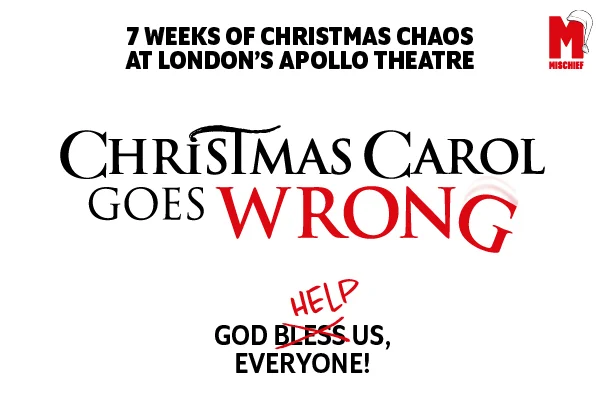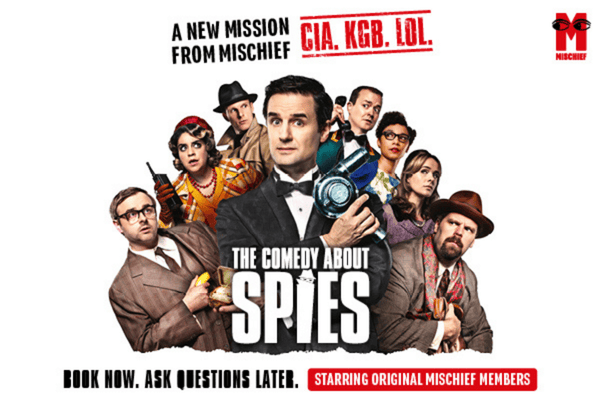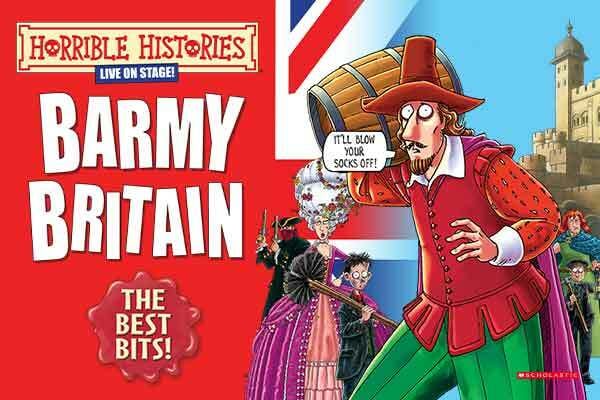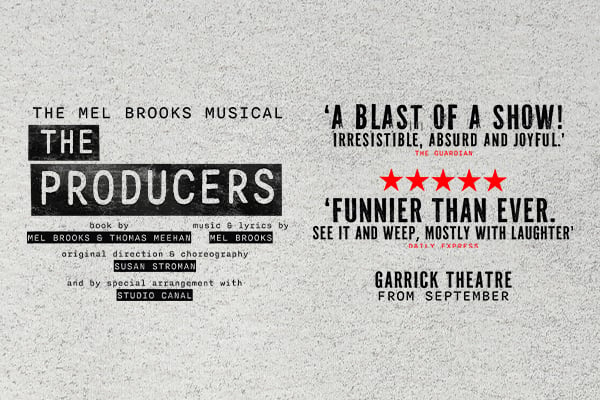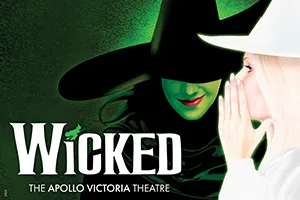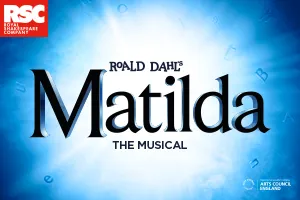Richard Beck first met Rosie Kay when she was putting on 5 SOLDIERS with Army@TheFringe in 2017, a work for which she had previously been nominated for Best Modern Choreography at the National Dance Awards and which has received numerous 5* reviews, including from Broadway Baby. In this interview he discusses her return to the stage, the new work she has created and the influences behind it.
Background
Rosie Kay was born in Scotland, graduated from the London Contemporary Dance School and after a career performing internationally, and formed Rosie Kay Dance Company in 2004.
In addition to her award-winning theatre work she was also choreographer for the film Sunshine on Leith (2013) and the live Commonwealth Games Handover Ceremony, 2018. She was the first Leverhulme Artist in Residence to the School of Anthropology and Museum of Ethnography, University of Oxford, 2013 – 2014 where she remains a Research Associate. She has received Young Achiever of Scotland from The Queen and also the Bonnie Bird New Choreography Award. She lives in Birmingham with her husband Louis Price and 5-year-old son, Gabriel.
Rosie, it’s six years since you last appeared on stage. Did you ever think that you would make a return and how does it feel now it's upon you?
It is a real mix of emotions. I am very glad I have waited this long before returning, I think about my dancing differently, and I took my time to retrain and to listen to my body again. I’d performed for so many years, but having a baby really threw me: my body wasn’t the same and I hated the focus that being a dancer took from being with my son. I decided that being a choreographer and running the company (which was project funded until 2018) was enough of a job to do.
Coming back I realise how much I’d missed that state of mind, and that state of physical preparation. Right now, I’m wanting to get the dance as perfect as possible, so that when I am on stage I can depend on my technique and really enjoy performing.
Your new work recognises the march of time in its title: Adult Female Dancer. What was so important to you that you felt the need to create this piece as a solo for yourself?
Yes - that’s a great question. The urge to create a solo had begun before the pandemic. I had started my career making solo work, and never came back to it. In 2018 I spent some time working alone again and doing some writing. I was shocked how much came out from my writing. I wanted to talk about my body, some of the sacrifices of pushing your body through pain for your job, and about why I dance and why, at two periods of my life, I have given up dancing. I felt that, as an older female dancer, I had something to say about the experience of a life lived through dance and on the stage. I seemed to want to say something, and for the first time in my career, I wanted to talk about my own experiences. Then when the pandemic struck, it seemed like the right thing to do. I had become very reflective. It was a time for us all to look at ourselves and look at our past, and think about how we wanted to change going forward.
You describe the work as “part autobiography, part socio-anthropological study”. What are the main elements within the piece?
So in order to delve deeply, I wrote a ‘dancing autobiography’. I tried to remember every aspect of my life growing up, where dance had been an important part of my existence. It made me think about the times when I’d had to give up, and how trauma had affected my life and my art and how many times dancing had given me such joy. I then distilled these into short extracts, which became quite poetic. They have themes of why I danced as a child, my identity being born in the Borders, some highlights of my dancing life, and some traumatic incidents, including the emergency birth of my son. Dancing it today in the studio, there is also a meditation on death - I mention the death of my brother (before I was born) and throughout the creation period my father was terminally ill, yet I couldn’t visit him as he was in Scotland. Sadly my father died in February this year, and I dedicate this show to him. But after all this pain, overall, it is a celebration of a dancing life and is really uplifting at the end.
You also revisited or discovered “core feminist texts” as one of the stimuli for this piece. Which ones made a particularly significant impact upon you?
Yes. I am really lucky enough to have an office space in my home, and I have three bookshelves full of amazing books, lots of dance books, art books, some esoteric studies, a large chunk of which I have read, and some I have carted around with me for most of my adult life but may not have actually read! It was interesting, as in my bookshelf were some early very feminist works (Mary Wollstonecraft), second wave feminist texts, stolen probably from my mother, quite a few 90’s third wave feminism and some more recent books. I really enjoyed re-reading Simone de Beauvoir, both The Second Sex classic and The Dutiful Daughter, and then less well known were Patriarchal Attitudes by Eva Figes and Let’s Take Back our Space by Marianne Wex, who is an incredible artist as well as spatial and body language analyst. I also was reading bell hooks and then Peggy McIntosh, which then led into my work on Romeo + Juliet and trying to understand the tragedy of the murder of George Floyd and be in solidarity the worldwide protests and the BLM movement.
I think going back to older texts was helpful: it kind of grounded me. My mother was an active feminist from the early 1970’s and I gained a lot from her, and then I studied Gender Studies at London Contemporary Dance School in the 1990’s. Somehow in the 90’s we all felt things were getting better, society was getting more equal and we were getting an equal place at the table. However, things haven’t changed nearly enough. The #metoo movement made an impact on society, but it didn’t change things profoundly. I started to want to tell my story and own it, own my life, my dancing and my body. That felt quite radical and quite liberating.
You're performing this piece as a triple bill entitled Absolute Solo II. To what extent are the three elements interrelated and how far do they work as stand alone pieces?
All three pieces are meditations on femininity and performance. The first Artemis Clown was choreographed (although I danced the original in a sketch) for a younger Italian dancer Gemma Paganelli and it was inspired by studying the works of Artemisia Gentileschi and the book by Anais Nin, Spy in the House of Love. It was about music, pain and peeling back the layers of female performance and clowning to reveal truth. It is beautiful and technically challenging to dance.
The second piece is called Patisserie, and it is a dance film of the premiere in 1999 at the Edinburgh Festival Fringe. I moved to Poland in 1998, to be a dancer with Polish Dance Theatre, straight from dance school, and I was struck by how different women's attitudes to beauty in Poland were from the UK. I interviewed Polish women about their appearance - this was just as Poland was opening up and for the first time there were a lot more adverts, magazines, and pressures on women to look a certain way. I transcribed the interviews and then created the work with elements of spoken text and dance. It's quite witty, but again, it’s about the vulnerability of performance.
The third piece, Adult Dancing Female, is about me now and why I dance and it's almost the secrets behind who I am, and my body, things that I probably wouldn't, or couldn’t talk about, but I can show you on stage. It is hugely personal but a real joy to dance.
You’re very much into gaining hands-on experience, perhaps most famously with 4th Battalion The Rifles when you were creating the stunning 5 SOLDIERS. For this latest work, Adult Female Dancer, you completed a five-day ‘virtual’ residency at C-DaRE, (Centre for Dance Research at the University of Coventry). What did you gain from that experience?
Thank you very much. With 5 SOLDIERS I lived and trained with an all male infantry battalion as they prepared for deployment in Afghanistan. I got an insight into how you train and prepare the body for war, but I also spent time at Headley Court Rehabilitation Centre and Selly Oak Hospital, seeing how devastating the injuries were from the wars in Iraq and Afghanistan and trying to see how the soldier body was created, broken and then put back together through war.
With this work, the subject was me, which in some ways could be easier, but felt quite shocking and revealing to me. Within my works are themes of female perspective and for the first time I wanted to be explicit about where my viewpoint is coming from. That felt quite brave and scary. The residency was essential to this process. With the first lockdown I had just managed to get myself and the company back from a US tour as everything closed behind us and I was in a weird state of limbo. Getting 3-4 hours a day at my desk, reading, watching dance films and thinking really pushed me in a new direction. For the first time in my career I revisited my early works, all solos, and re-read my dissertations on both Weimar art and Weimar dance. I saw how influenced I had been by some of the great early 20th Century German female choreographers: Mary Wigman, Gret Palucca, Anita Berber and the art of that period; Otto Dix who talked of ‘never look away, never flinch’, and George Grosz and Hannah Hoch. I started to see how this basis had influenced so many of my later works, such as 5 SOLDIERS, but I’d lost that connection to my own body. I actually gave up dancing a few years into my career. Once I’d rediscovered my need to dance and choreograph, moving to and setting up my company in Birmingham, I’d never looked back. I actually had to sit down and talk to my husband about it over dinner, as I realised there was a schism, the before and the after, and I needed to reconcile that about my life, my art and my work. It was very moving. It was wonderful to be with such a supportive group of women who gently questioned me and pulled out my new impulses. I was very grateful.
Your premiere is at the Birmingham Rep. How do you feel about the theatre scene in the Midlands?
I think there is real optimism. I am very excited about Carlos Acosta being at the Birmingham Royal Ballet and he has been really pro-active through the lockdown with getting new works commissioned and made. He seems to be very artistically led and I think he could do great things for the city. I’ve also been so pleased to see other companies not just survive but rethink what they do, such as Aakash Odedra, Sonia Sabri, ACE Dance and Music, Motionhouse, Birmingham Dance Network and Autin Dance Theatre. There are so many passionate and committed people, such as Matthew Lambden, who runs Heart Works Studios, and artists such as Shanelle Clemenson and Harriet Ellis making their own work and researching their practice. We also did some studies into putting on an outdoor work in the Northfield area of Birmingham, where I live, in 2022, and so this pandemic really connected me to my locality and the people nearby wanting to dance. I really think we will have something new to show and offer to the world once the situation safely improves.
What plans do you have for the future?
Well, after Birmingham REP I do a small large-scale tour to Salisbury Playhouse and Edinburgh Festival Theatre, so that will literally keep me on my toes. Then I am back into my re-imagining of Romeo + Juliet with the most incredibly talented cast of dancers. We created our first draft of the show in March/April and now we can’t wait to get back into the studio in August to then premiere in September at Birmingham Hippodrome.
Many thanks for that insight, Rosie, and we wish you every success with your performances of Absolute Solo II and the development of Romeo + Juliet.









